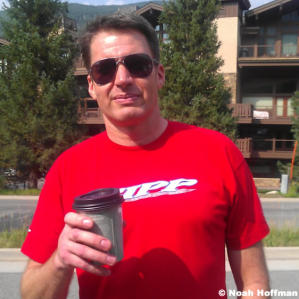N + 1
I know, I know, you're thinking, "FBD, I'm a triathlete, why do *I* need a fat bike? Wouldn't it make more sense for me to get a new aero bike?" In short, no. Here's why: you already have one of those. Sure, the aero bike is your bread and butter - you need to spend the bulk of your cycling training time on it and it's a vital component of your overall program, but here's the kicker, you already HAVE a tri bike, yes? And while no one loves a new bike more than the FBD, why not get a new bike that not only keeps training fresh and your stoke high, but also opens up a whole new suite of options? In the end, all of this will make you faster.
When I first met a young, strapping Jordan Rapp, we were both former rowers sort of testing the waters (no pun intended) in triathlon. We knew a lot of the same people, but we didn't yet know each other. The topic of bikes came up (as usually happens with me within about the first 60 seconds of any conversation) and Jordan immediately threw out this brilliant formula, "FBD," he opined, "the number of bikes that you need is 'n + 1,' where n = the number of bikes you currently own." It was right then and there that I knew this guy and I were going to get along just fine.
The point here is that more bikes = more fun, and really, isn't that why we're all here? I'm pretty sure all of this is supposed to be fun and nothing is more fun that a fatty (take it easy all of you 420ers out there, all three of you), I'm not talking about Mary Jane, I'm talking about Fat Boys. And not these Fat Boys, THESE Fat Boys:

Why do it
The short answer is I already answered this, "More bikes = more fun," This is such a hard and fast truth there's even a clothing company dedicated entirely to this idea called (drum roll please)... N+1 Apparel.
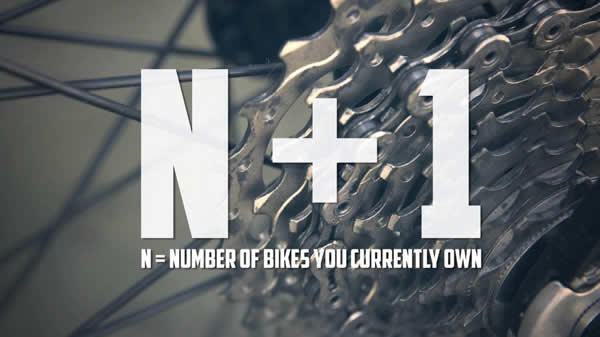
Please also remember that you can't take it with you and we're all going to die, so why not be the guy that dies w/ lots of cool bikes in his living room (you don't keep your bikes in the garage, like some type of animal, do you? If you do, walk away from your computer, go apologize to them immediately, move them into your bedroom, then resume reading, you savage).
How this will help you win races
There are several reasons why every triathlete should own a fat bike:
1. Muscle balance - Ever see those guys grinding away miles on their aero bikes with upper bodies that most closely resemble Tyrannosaurus Rex?

Well, don't let that be you. Riding a bike off-road not only keeps your mind fresh (more on this later), but it also does wonders for keeping good muscle balance "upstairs."
2. Bike handling - Ever see those guys upside-down in the ditch after a gentle, bending turn on mildly damp roads? Well, don't let that be you. To go fast you need to earn how to handle your bike and there's no better, safer way to learn bike handling than on a fatty.
3. Versatility - Winter training sucks, we all know that. Ever see those guys who are so burned out come mid-season because they logged hundreds of hours indoors all winter? Well, don't let that be you. With a good fat bike, you can ride essentially anywhere (more on this later too)

4. Sport specificity - To go fast on your bike you need to spend time on your bike, so having an option that keeps riding fun, interesting and safe all year translates directly to race speed. Ever see those guys who train a ton with weird crap that doesn't translate all that well to triathlon? Well, don't let that be you.
5. Fun - The more fun training is, the longer you will train (both annual hours and years of engagement). Ever see those guys who throw themselves into racing whole hog, then burnout after just a season or two because they went after it too hard? Well, don't let that be you.
How to do it
This is pretty simple - buy one, go ride it. Boom.
Actually doing it
Obviously the first thing you need is a good fat bike. In my case, I was very fortunate in that the fine folks at Specialized were kind enough to provide me a Fat Boy Expert Carbon. In short, this bike KICKED ASS. It is light (not just for a fat bike, but for any mtb for that matter), stiff and surpassingly nimble for all of the contact patch it offers.
It's been my experience that most road triathletes don't nerd out over bike and component weight as much mountain bikers and pure road racers - I suppose that's because once you bolt on 15 lbs of aero bars, butt-rocket bottle cages, Bento boxes stuffed with enough food to feed a small army, and plumb 50 meters of hydration cables all over, under, around and through your whip you figure, "hey, what's a few more grams on the frame?"
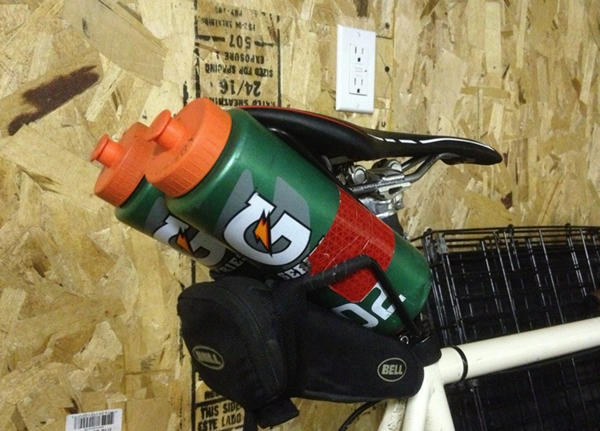
As a die-hard gram counter though, I have never subscribed to this theory, in particular since I do a lot of training in the mountains, where every extra ounce feels like a pound after an hour of climbing. So to say I was super-stoked with this bike is an understatement. If I had any reservations about this test going in it's that this thing was going to climb like one of those god damn 15 meter long motor homes that cock-block my beloved Colorado mountain passes all summer. In reality, nothing could be further from the truth. This bad boy climbs like a scalded cat.

Since this test is the first of several reports, it was designed to cover all of the riding options: cold and dry, cold and wet, cold and snowy, and "normal." To do this at this time of year meant that much of the snow testing was done up high, like REALLY high: 10,000 ft. That's high (yes, since it's Colorado, insert your own weed joke here). Trust me when I say that I don't care how much you don't think weight matters, when you're climbing in the snow, in the mountains, and at 10,000 ft, you'll be praising me with every peddle revolution if you heed this sage advice. (You should probably already be praising me, but that's another story.)
Stylin' and profilin'
If you've learned nothing else from any of my previous columns, hopefully you've now permanently engrained the fact that "nothing is more important than looking good." A close second though is, "there is no such thing as bad weather, only bad clothing." Never do these two philosophies intersect more vividly than with winter cycling clothing: you've gots to be warm and you GOTS to look good.

These two often independent goals were easily satisfied in this test thank to Louis Garneau and Lake. Louis Garneau outfitted me with the following awesome gear and it all performed swimmingly, even though I never actually did take it swimming, which considering the circumstances is a very good thing:
- Matrix 2.0 Balaclava
- Robson MT2 Gaiters
- Alpha Cycling Vest
- LG Super Shield
- Proof Gloves
- Ghost Helmet
- Enertec Jacket
- Activate Jacket
- Training Top
- Training Pants
All of which is available now except the Bigwill Gloves, which are Winter '16/'17.
In addition to being tall, a good dancer, and a lot of fun to be with, the FBD was blessed with excellent circulation, so thankfully cold hands and cold feet are usually not an issue for me. Having said that, riding your bike in the winter makes cold hands and cold feet almost unavoidable. Well, at least that used to be the case, but thanks to Lake and Louis Garneau those days are gone. I'll delve more into my exact winter gear for the winter test, as I tested three different glove combinations, all of which were excellent.
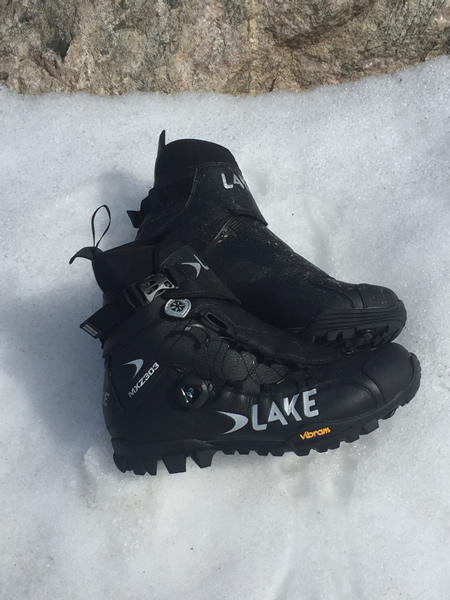
The footwear report is an easy one though, as the Lake MXZ303 performed flawlessly. I wore these shoes with only normal, mid-weight wool Nordic skiing socks and I was fine in temps ranging from 5 degrees up to about 40. Anything north of 40 and my feet were actually too warm, though it should be noted that I was in the sunny, dry mountain air and climbing more than my blood pressure on the NJ Turnpike. If you're riding around cold, damp woods, keep'em on to 50ish. 60 if you are a really baby or one of those d-bags pretending that you have Raynaud's Syndrome. Here's a news flash - 99.9% of you out there DO NOT have Raynaud's - you have what we in the business refer to as, "cold hands and feet." Now stop crying and misdiagnosing and go buy some good winter gear.
Snow riding
If you're anything like me (and as much as you hate to admit it, you're most likely are A LOT like me), and as much as you want to "keep it fun," you can't help yourself and your primary mission in life is to make yourself miserable. Me too. Given this, I took the fatty out on some epic adventures because remember what we talked about in Episode 1, the first rule of endurance athletics is that "If some is good, more is better." This meant I couldn't just ride the fatty, I had to ride it a lot. And lots of places. In a wide variety of conditions.
How was it? Well, I think this video says it all:
Can you do this on your trainer? I didn't think so. I can probably stop here, but again, if some (advice) is good, more is clearly better.
Winter trail riding
While snow riding is probably the most sexy, in all reality it is only applicable to a fairly small percentage of the country, especially with the current weather trends. What there is no shortage of though is just plain cold, nasty winter weather and this is really where the fatty hits its stride. I did several "transitions rides" in Philly in Feb (no, not the tri-geek bike —> run nonsense, transitions as in transitioning weather), running the gamut from dry, frozen winter trails, to 2-4" dustings, to hard-pack ice, to post-storm slop. These are conditions that even as I hard-core mountain biker I probably would have relegated myself to the rollers, as even a wide 2.2" mtb tire wouldn't have really cut it.
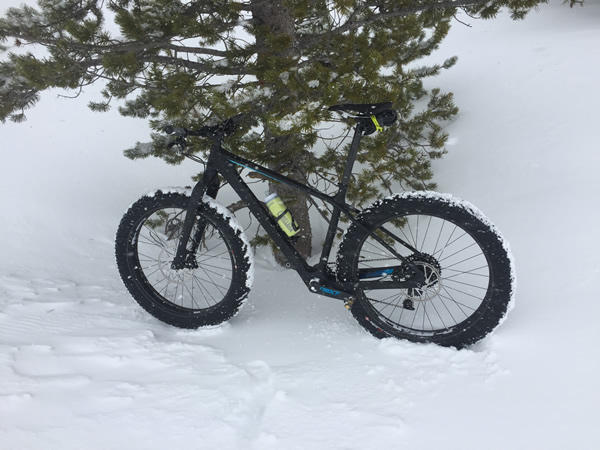
(Get it? CUT IT, as in cut through the mud? Damn, I'm good) The 4.0 Specialized Ground Control Fat were solid and stable and the 4.6" Specialized Ground Control Fat KILLED IT. Whoever said that, "Less is more," wasn't trying to pilot a mountain bike up hill in the wet, cold mud in pelting 35 degree rain (I told you I hated myself). Trust me dudes, MORE is more.
All-around riding
In case you're thinking that the fatty is only good for winter conditions, wrong-o. I made a point of doing as much testing as possible in moderate weather and thanks to wildly variable weather this winter in Philadelphia, it was possible to ride this bike in temperatures from 20 to 70 (which is terrifying that we now have 70 degree weather in the Northeast in the winter, but that's a topic for another day). The results of these tests are that buying a fatty now is a good idea, as you're going to want access to this training diversity right now. Remember, it's a LONG season and keeping it fun and fresh now with a fatty cruiser on your recovery/easy day will reap all sorts of dividends come August or September (not to mention October, for you really hard chargers out there). Plus, once the weather gets crappy again, you are already perfectly positioned for your best winter ever.

Next steps
Are you crazy? Go buy one! Haven't you been paying attention? These bad boys climb like a mountain goat, descend like an anvil dropped off a cliff by a coyote on an unsuspecting road runner and most importantly, give you a great way to keep training fun and safe.

And since you are now going to buy one, do yourself a favor a buy a good one. Seriously. When was the last time you bought something nice and then later wished you had bought the crappy model? Never, right? When was the last time you bought the crappy version of something and later wished you had the good one? See where I'm going w/ this? Good. Go get one. Now. And get a good one. You'll thank me later. (Please direct all angry spousal letters to Mr. Jordan Rapp, c/o Slowtwitch).



